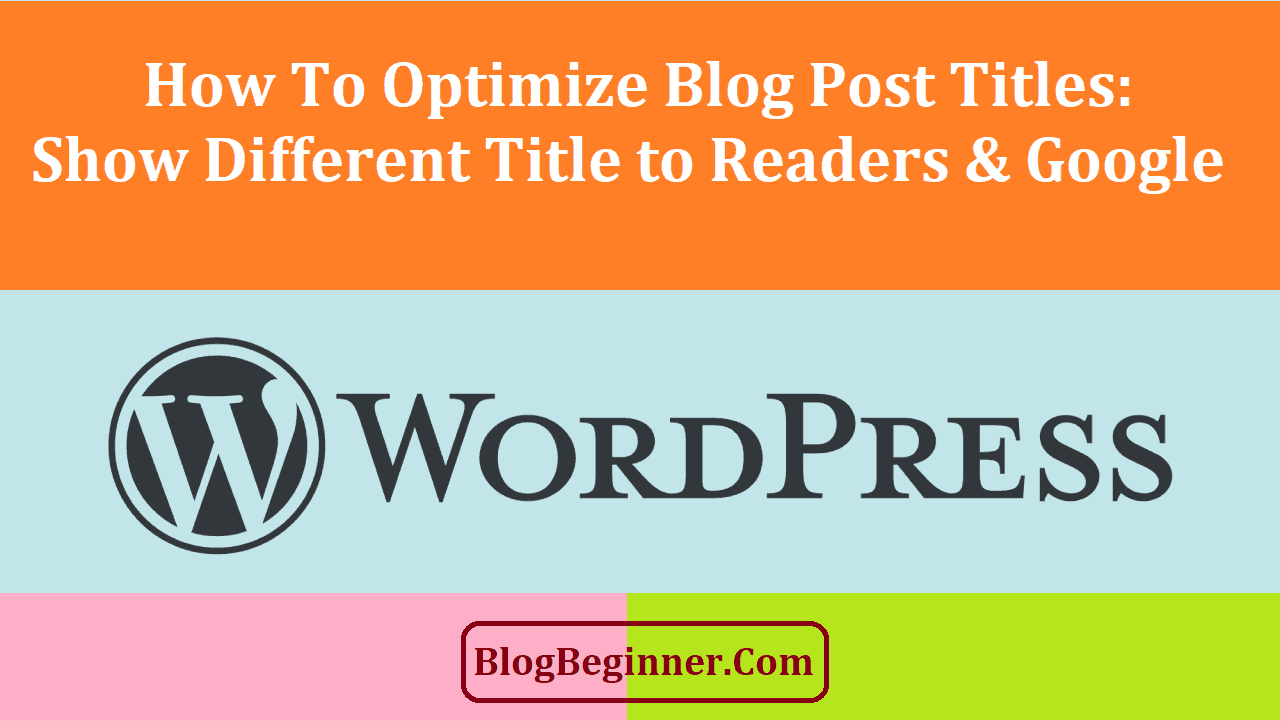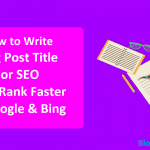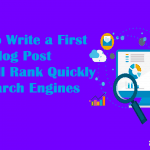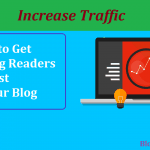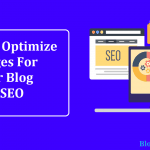There has been a long-standing debate on search engine optimization (SEO) and whether we should write for search engines or humans.
As a blogger, you know that it is important to create a headline that immediately gets noticed, but improving your title is equally important for SEO purposes.
So which one do you choose? Simple — you don’t.
Today, we’ll show you how you can actually do both using title tags, which are an important part of any SEO strategy.
So here you will have to create two post titles, one for people and one for search engines. But you also need to be careful that those are catchy headlines.
The whole process doesn’t have to be difficult, as we have a step-by-step guide on how to create headlines that both search engines and humans will love.
Let’s begin!
Contents In Page
Step 1: Write Your Headlines
The title tag is used to create a search engine-friendly headline. We know you must be wondering how writing a title tag can be different from writing a reader-friendly headline.
Well, it’s possible that in most cases, your headlines and title tags will be the same — but not every time.
Let us give you an example.
The headline we chose for this post is ‘How to Show Different Post Titles to Readers and Search Engines.’ But there is a possibility that the search engine results page (SERP) will display a different title. Let’s say it shows, ‘How to Create Post Titles for Search Engines.’
Do you notice a difference between the two?
The title shown on the page is more detailed than the one in the SERPs. That’s because the search engine prefers a short one, and also, it takes less time to read.
So here are a few tips on how to write a great title for search engines.
- The title should be small. Ideally, it shouldn’t be more than 60 characters on Google; otherwise, the search engine will cut your title with an ellipsis (…).
- You should always include your main keyword in the title tag. It’s even better if you place the keyword at the beginning of your title. This is to help the search engine find your keyword right away.
- Your title should be able to tell what the page is about. It should be related to your content and attract the reader’s attention.
Step 2: Show Different Headlines
When you come up with headlines for both humans and search engines, the next step involves setting those headlines as the title of your page.
Basically, most websites are hosted on WordPress or some other CMS. Many of you might even have a custom site where you can edit directly using HTML.
Let us show you how to create title tags for each.
Using WordPress
If you’re using WordPress, chances are that you might already be using the Yoast SEO Plugin.
Trust us — it can really be a powerful plugin to help you optimize your content SEO-wise, as well as make it reader-friendly.
But if you haven’t installed Yoast yet, it’s time to do it now. Just follow these simple steps.
- Go to ‘Plugins’ and choose ‘Add New.’
- Type ‘Yoast’ in the Plugin Search Bar.
- Install the ‘Yoast SEO.’
- Then click on ‘Activate.’
The plugin will start running.
So now you will see there is ‘Post Title’ at the beginning of the page. This is where your reader-friendly headline will be displayed.
And when you scroll down, you will see the editor box. Click on the ‘Edit Snippet’ option and enter your meta title, a.k.a. title tag.
This also gives you a good preview of how other users see your title and description in the search results.
Using a Custom Site That’s Not Hosted on a CMS
If your website is not hosted on a CMS, you can directly edit by using HTML.
It’s pretty simple!
The first thing you would need access to is the HTML for a specific page.
Once you are there, find the <head> </head> tag. In between, insert the <title> tag followed by the search engine headline and close again using the </title> tag.
Save your code, and it’s done.
Using a Different Type of CMS or Web Host
There are many people who use a completely different set-up for their web hosting.
Well, in that case, you would need to contact your web hosting company to get access to your HTML or edit page title tag.
And then, follow the same steps mentioned above. You will be good to go.
Now that you have learned how to show different titles to both readers and search engines, let us share a few tips on how to write reader-friendly headlines for your articles.
How to Write Reader-Friendly Titles
To write a killer headline, you need to first identify the objective of your article and its effect on the user.
To make it a bit clearer, let us elaborate:
‘Objective’ is identifying the purpose of the article. Ask questions like, “What is the article based around?”
Meanwhile, the ‘effect’ is the value and benefits that the user is going to derive by reading your article. It should be clear from your headlines so that the user stops to read the whole content.
Our personal favorite is using numbers in the titles, especially when writing a listicle blog. And this goes without saying — always add target keywords in your title to make it SEO-friendly.
Conclusion
We know it may all look so overwhelming to you right now. But once you master these steps and learn how to use them in all of your blog posts, nothing will stop you from creating captivating headlines.
If you still aren’t using the title tags, it’s time to do so. They can help increase your visibility in the SERPs.
Lastly, we would like to advise you to make sure that both your titles are SEO-friendly, as that will help drive traffic to your website.
